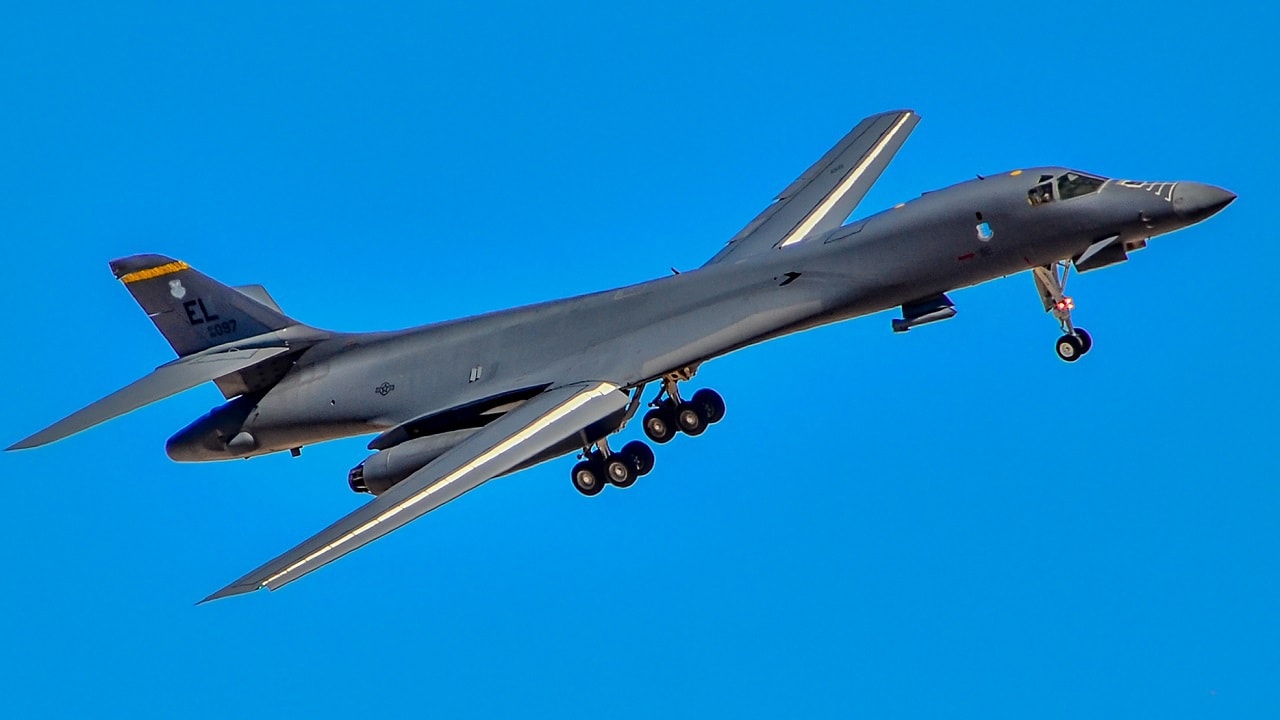The B-1B was a legend that started its career as a nuclear bomber during the height of the Cold War, designed to attack Russia and its allies: The B-1B Lancer was originally made to be the main delivery mechanism for the U.S. nuclear triad in the 1980s if war with Russia ever broke out. Instead, after the Cold War, it became a conventional bombing warhorse. The B-1B switched over from its nuclear-bombing mission in the mid-1990s. 9/11 made it a go-to bomber during the war on terror.
It conducted high percentages of the total munitions dropped after 2001 – an era when it punished numerous targets in Iraq and Afghanistan. But the B-1B showed its age with extensive wear and tear. By 2019 only a handful was flight-worthy due to heavy use in those conflicts.
The B-1B: A Multi-mission Bomber
The B-1B can drop and launch a diverse range of guided and unguided ordnance. The airplane is versatile and mostly thrives in a high operational tempo environment. It still has the speed and maneuverability to be included as a mainstay in major joint warfighting plans.
The B-1B Bone Is Slowly Being Phased Out
Known as “The Bone,” the B-1B will eventually be replaced by the B-21 Raider but that transition will likely not completely happen for another five years. And there are estimates that some B-1B bombers will be in the fleet for many years after. The Air Force is cutting down the number of B-1Bs though. With an arsenal of 100-jets at one point, the Air Force sent 17 B-1Bs into retirement in 2021. Three dozen met the chopping block in the early 2000s. Now there are 45 left that fly out of Ellsworth AFB, South Dakota, and Dyess AFB, Texas.
Focus on the B-1B Bombers that Are Left
The trimmed fleet will enable better maintenance and an improved supply of spare parts. There have been structural wear, fuel tank issues, and problems with the ejection seat that have crimped readiness. The Air Force hopes to save and re-program $10 to $30 million in funds that it would have spent to keep the 17 retired bombers flying.
Reagan’s Peace Through Strenght Strategy Invigorated the Program
The B-1B has had a long life. Originally flown as the B-1BA in 1974, it was canceled later that decade after four were built. The Reagan administration resurrected the program to answer the Soviet threat. The B-1B beginning in 1984 showed its worth. It could fly 900 miles per hour at 60,000 feet with a range of 7,000 miles. The Air Force ordered 100 bombers and Boeing began pumping them out.
B-1B Mission Shifted Due to Arms Treaty Obligations
The original idea for the B-1B was to fly at low-altitude underneath Soviet air defense cover and deliver nuclear weapons. The end of the Cold War changed that mission. President George H.W. Bush ordered a $3 billion refit, which called for the elimination of nuclear-arming systems. Furthermore, guidelines under the New START treaty necessitated the prevention of nuclear weapon pylons from being fastened to the bomber. The conversion process was completed by 2011, and Russians have inspected the aircraft annually to make sure the Americans are following the treaty.
Let’s Make It Conventional
The bomber had such a large payload the thinking on its mission set shifted to delivering a wide range of dumb and laser-guided bombs, cluster munitions, Joint Direct Attack Munitions, and Joint Air-to-Surface Standoff Missiles.
It’s Survivable
The B-1B has synthetic aperture radar which allows it to track moving targets. The airplane has electronic warfare capabilities that can jam incoming bogeys along with chaff and flares that can spoof enemy radar-guided and heat-seeking missiles.
The B-1B has been a valuable airplane over the last decades. It has shown admirable service to the Air Force and has set records for flight. The B-21 stealth bomber is coming in the next few years but due to the versatility and combat history of the B-1B, the Bone will probably be in the fleet even when the B-21 begins flying regularly.
Now serving as 1945’s Defense and National Security Editor, Brent M. Eastwood, PhD, is the author of Humans, Machines, and Data: Future Trends in Warfare. He is an Emerging Threats expert and former U.S. Army Infantry officer. You can follow him on Twitter @BMEastwood.

